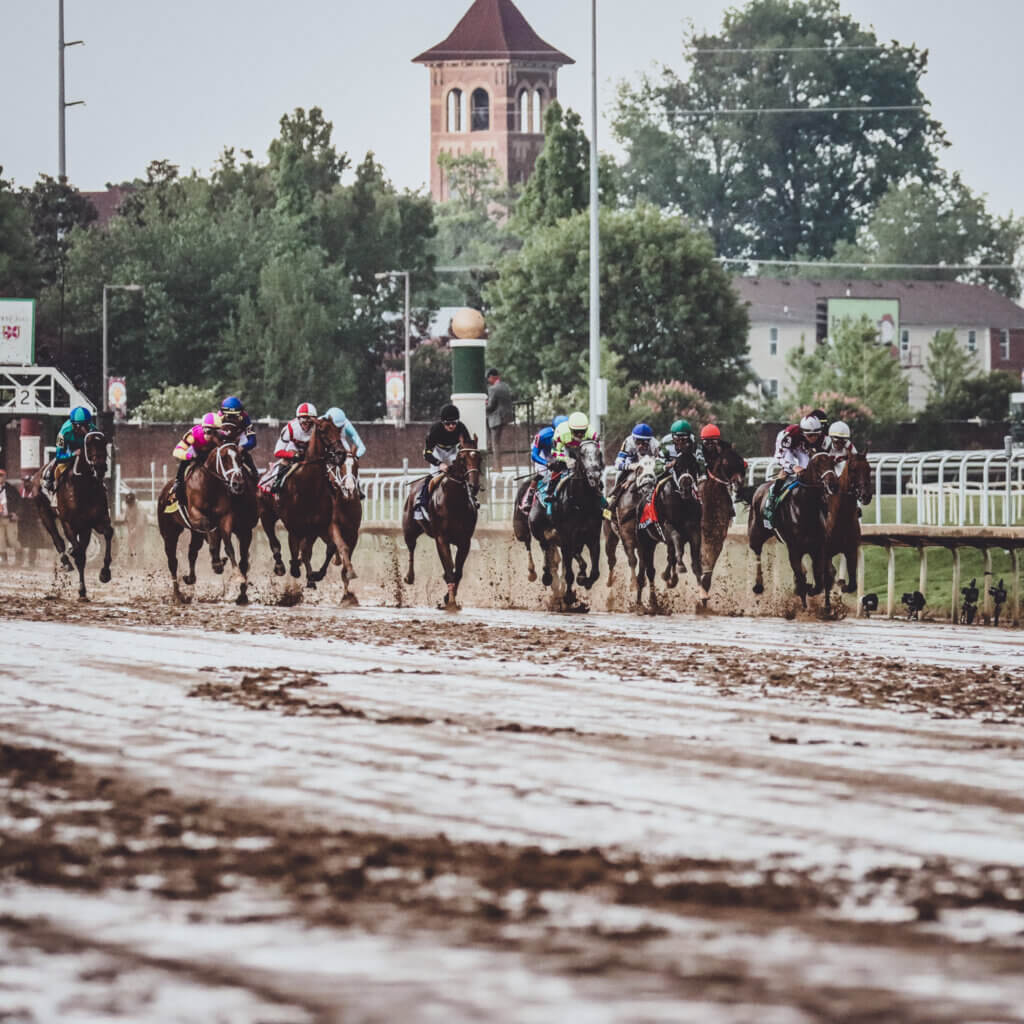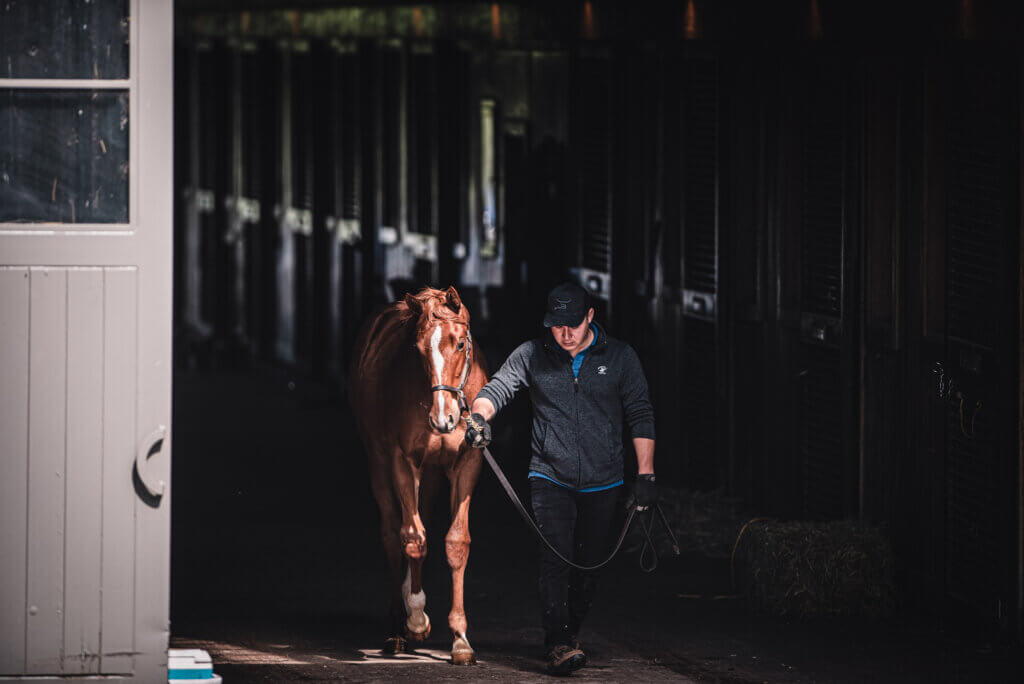The vibrant spectacle of horseracing is celebrated for its fusion of tradition and excitement. However, a contrasting image is the possibility of catastrophic musculoskeletal injury.
Racehorses in training must balance developing a strong musculoskeletal system with avoiding overload. Imbalances can lead to musculoskeletal injuries, but progress has been made in detecting and understanding these issues through digital radiographs, bone scans, and advanced imaging. Researchers and clinicians continue to work towards making racing safer for horses by preventing and identifying “at risk” horses.
This article takes a deeper dive into the concerted efforts, grounded in scientific research and industry-wide initiatives, that are improving the landscape of racehorse safety.
1. Racing Surfaces
Consistency, cushioning, and drainage are critical factors that can affect the risk of injuries. Under the Horseracing Integrity and Safety Authority (HISA), racetracks are required to undergo evaluations, including track maintenance and safety.
Thanks to ongoing research, understanding the significant role track conditions play in injury risks and fatalities has been a crucial advancement. However, the science and data regarding the unequivocally safest surface remain inconclusive. Different studies highlight the advantages and disadvantages of various surface types, from traditional dirt to synthetic surfaces and turf, but factors like weather, track maintenance protocols, and the physical condition of the horses themselves also play influential roles.
Recognizing the complexity, the industry is investing extensively in research, focusing not only on the surface layer but also on the underlying track foundations which determines how a track responds to different weather conditions and constant use.
There is also an increasing emphasis on understanding the interaction between the track, the horse’s biomechanics, and the environmental conditions. This holistic approach ensures that all contributing factors to a horse’s performance and safety are considered, not just the track itself.
2. Medication
Another factor that is considered of high relevance is what constitutes the appropriate use of therapeutic medications within the context of horse racing and training.
Regulations are carefully constructed to govern the use of drugs to prevent horses from performing while under the influence of medications that could mask pain. These regulations are now underpinned by nationally uniform rules set by HISA, and along with rigorous drug testing, both at competition and during training, are crucial to maintaining the health of the horse and the integrity of the sport.
3. Prevention
Veterinary care focuses not only on reactive measures but also on predicting and preventing injuries.
Pre-race examinations, aided by advanced diagnostic testing and imaging, are increasingly common to identify any potential concerns. The main challenge lies in identifying horses at risk of musculoskeletal injury, even if they do not show obvious lameness.
With stricter regulations in US horse racing, technology and innovation play a crucial role in identifying at-risk or sub-clinically injured horses. To ensure optimal use of these technologies, it is important to avoid introducing confusing information.
The following system is recommended to determine the appropriate phase of usage for identifying sub-clinically injured horses:
- Passive detection of abnormality: This may involve wearable biometric sensors and/or biomarkers to identify gait abnormalities (Note: These technologies are still in development, and new information will emerge over time).
- Clinical evaluation conducted by the veterinary team, including lameness examination with diagnostic analgesia if necessary, to identify potential injuries. Radiology and/or ultrasound may be employed based on the evaluation.
- If needed, more advanced imaging techniques like PET/CT/MRI/scintigraphy would be recommended. Advanced imaging enables the detection of conditions that may lead to injuries, offering unprecedented detail to detect even subtle signs of disease. However, it is important to note that advanced imaging is currently a diagnostic technique and not a screening tool.
4. RESEARCH IN THERAPIES
Advances in veterinary research, including regenerative therapies like stem cell treatment and platelet-rich plasma therapy, are showing promise in treating and potentially preventing musculoskeletal disorders.
Additionally, biomechanical research is leading the way to improved training and rehabilitation protocols, aiming to optimize the horse’s comfort, athletic career, and physical condition while minimizing the risk of injury.
5. DATA-DRIVEN DECISION MAKING
The Equine Injury Database (EID) and initiatives like HISA have played a crucial role in reducing racehorse injuries. By collecting information from various tracks, statistical investigations have identified risk factors that can be addressed. The EID provides a comprehensive view of factors contributing to equine injuries, helping stakeholders identify patterns and trends. This data enables targeted interventions, such as refining racing surfaces and tailoring training regimens. The aim is that eventually, for example, subtle correlations between track conditions and injury rates, or the impact of specific training practices on the health of the horses, can now be scrutinized to the benefit of all.
The industry utilizes data to implement targeted interventions that are both proactive and preventative. For instance, track maintenance teams can leverage data to refine racing surfaces, minimizing conditions that may lead to injury. Trainers can also use these insights to customize regimens, ensuring horses are adequately prepared for racing while reducing the risk of overtraining or undertraining. Additionally, empirical evidence allows for optimized scheduling of races, providing sufficient rest periods and recovery times.
With each data point, the horse racing community not only learns but evolves, transforming statistics into strategies that promise a safer future for the sport.
6. COLLABORATIVE EFFORTS
Industry-wide Initiatives
The battle against racehorse fatalities is not just fought by trainers, scientists and veterinarians alone but involves a collaborative effort across the industry:
a. Regulatory Reforms
Regulatory bodies and racetracks are stepping up, setting higher standards for everything from medication control to track maintenance. The Horseracing Integrity and Safety Act (HISA) represents a significant milestone in this regard, aiming to standardize regulations across states and ensure a uniformly high standard of horse welfare.
b. Industry Forums and Conferences
For the exchange of knowledge, platforms like the American Association of Equine Practitioners (AAEP)’s Forum on Thoroughbred Safety and Injury Prevention play a pivotal role. These gatherings bring together veterinarians, trainers, and industry experts to discuss the latest research findings, technological advancements, and best practices.
Moreover, they have also explored the use of wearable technologies; similar to your FitBit or Apple Watch, they are capable of collecting data on a horse’s stride length, stride symmetry, acceleration, heart rate, and other biometrics.
Ongoing research in biomarkers shows promise in providing trainers and veterinarians with vital information to identify horses at risk of injury, prompting further investigation. The widespread use of these technologies can potentially serve as an early warning system by detecting changes in an individual horse’s “stride signature” that may indicate an underlying issue. Timely intervention can prevent injuries from occurring if problems are identified early on.
c. Horse welfare culture
Fostering a culture of horse welfare is not merely a moral obligation but an essential pillar for industry-wide accountability and the reduction of racetrack fatalities. This collective responsibility, shared by all who cherish and participate in the sport, reflects the core values and ethical standards of the horseracing community.
The way the industry cares for and respects its horses mirrors its commitment to ethical stewardship. The industry’s stakeholders, including owners, trainers, and sponsors, all must embrace this stewardship, which means making decisions with the horse’s health and safety as the foremost consideration, whether it’s in training, racing practices, or day-to-day care.
D. best practice in Breeding & raising young thoroughbreds
The breeding sector plays a crucial role in the genetic enhancement and optimal upbringing of thoroughbreds for successful racing careers. Ongoing research focuses on the delicate balance of exercise, surgical interventions, and medication usage in young racehorses. For example, studies indicate a direct link between bone density and an adequate exercise regimen for weanlings, yearlings, and two-year-olds.
Concerns arise regarding in-breeding, cosmetic procedures on young horses, and pressures placed on two-year-olds prepared for sale, among other issues. Ensuring best practice in these areas will assist to breed and raise a sound thoroughbreds.
The Track Forward
While progress is undeniable, challenges remain. Issues like the heterogeneity of track surfaces across different venues as well as other factors present obstacles. Moreover, balancing the traditions of the sport with the need for modernization requires a nuanced approach.
In the end, the journey to reduce racehorse track fatalities is a testament to the industry’s commitment to evolution and improvement. It’s a multidisciplinary endeavor, leveraging science, technology, and regulatory reform to safeguard the welfare of these incredible athletes.
Sources
- AAEP (American Association of Equine Practitioners) Forum on Thoroughbred Safety and Injury Prevention link at aaep.org
- RMTC (Racing Medication & Testing Consortium) website link rmtcnet.com
- HISA (Horseracing Integrity & Safety Act) website link hisaus.org
- EID (Equine Injury Database) link at jockeyclub.com



